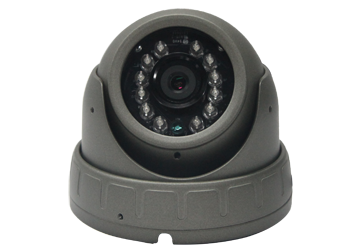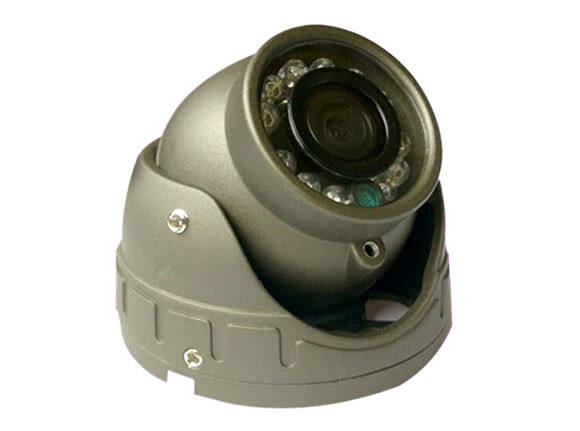Transforming Public Transit Through Advanced Passenger Counting Technology
The evolution of public transportation has reached a pivotal moment where technology plays an increasingly crucial role in operational efficiency. At the forefront of this transformation is the passenger counter, a sophisticated system that's revolutionizing how bus operators manage their fleets and serve their communities. These innovative counting solutions provide invaluable insights that go far beyond simple headcounts, enabling transit authorities to make data-driven decisions that enhance service quality and operational effectiveness.
Modern passenger counters utilize cutting-edge sensors and analytics to deliver real-time information about ridership patterns, peak usage times, and capacity utilization. This technology has become indispensable for forward-thinking transit operators who recognize the need to optimize their services in response to changing passenger demands and urban mobility patterns.
Core Benefits of Passenger Counting Systems
Enhanced Operational Efficiency
Installing a passenger counter delivers immediate improvements to operational efficiency across multiple aspects of bus system management. Transit operators can precisely track vehicle loads throughout the day, enabling them to adjust schedules and route frequencies based on actual demand patterns rather than assumptions.
Real-time passenger counting data allows operators to respond swiftly to unexpected surges in ridership, deploying additional vehicles when needed or adjusting routes to accommodate changing travel patterns. This dynamic response capability ensures optimal resource allocation and prevents both overcrowding and underutilization of vehicles.
Data-Driven Decision Making
The wealth of data provided by passenger counters empowers transit authorities to make informed decisions about service improvements and resource allocation. By analyzing historical ridership trends, operators can identify popular routes, peak travel times, and underserved areas with unprecedented accuracy.
This detailed information supports strategic planning initiatives, helping authorities optimize route design, adjust service frequencies, and plan infrastructure investments based on concrete evidence rather than estimates. The result is a more efficient and responsive transit system that better serves its community's needs.

Financial Advantages and ROI
Cost Optimization
Implementing a passenger counter system represents a strategic investment that typically delivers substantial returns through various cost-saving mechanisms. By precisely tracking ridership patterns, transit operators can optimize their fleet deployment, reducing unnecessary vehicle runs during off-peak hours while ensuring adequate capacity during high-demand periods.
The system helps identify opportunities for route consolidation, schedule adjustments, and resource reallocation that can significantly reduce operational costs without compromising service quality. These optimizations often result in reduced fuel consumption, lower maintenance expenses, and more efficient staff scheduling.
Revenue Enhancement
Beyond cost savings, passenger counters contribute directly to revenue generation by providing insights that help maximize fare collection and identify new service opportunities. Accurate ridership data enables operators to justify fare structures, optimize pricing strategies, and identify potential new routes based on demonstrated demand patterns.
The technology also helps prevent revenue leakage by providing accurate passenger counts that can be cross-referenced with fare collection data. This capability ensures transit authorities capture all potential revenue while identifying areas where fare evasion might be occurring.
Improving Customer Experience
Enhanced Service Planning
Modern passenger counters play a crucial role in elevating the overall customer experience. By understanding exactly how and when people use bus services, operators can fine-tune their schedules to better match passenger needs and preferences. This data-driven approach helps reduce wait times, minimize overcrowding, and ensure more comfortable journeys for all passengers.
The system enables operators to identify and address service gaps quickly, ensuring that resources are allocated where they're needed most. This responsive approach to service delivery helps build passenger trust and satisfaction, ultimately encouraging increased ridership.
Real-Time Information Systems
When integrated with passenger information systems, counting technology can provide real-time updates about vehicle capacity and crowding levels. This information helps passengers make informed decisions about their travel timing and route choices, leading to a more pleasant and predictable transit experience.
The ability to access real-time occupancy data through mobile apps or digital displays gives passengers greater control over their journey planning, reducing uncertainty and improving satisfaction with the service.
Frequently Asked Questions
How accurate are modern passenger counting systems?
Modern passenger counters achieve accuracy rates of 95-99% using advanced sensors and AI-powered analytics. This high level of accuracy ensures reliable data for both operational planning and regulatory compliance purposes.
What types of data can passenger counters collect?
Passenger counters can collect various data points including boarding and alighting counts, occupancy rates, dwell times, peak usage patterns, and temporal distribution of passenger flows. This comprehensive data collection enables detailed analysis and informed decision-making.
How long does it take to see ROI from a passenger counting system?
Most transit authorities report seeing significant returns on their investment within 12-24 months of implementation, through improved operational efficiency, reduced costs, and optimized resource allocation. The exact timeframe depends on the scale of implementation and specific optimization opportunities identified.
Can passenger counters integrate with existing transit management systems?
Yes, modern passenger counting systems are designed to integrate seamlessly with other transit management tools, including scheduling software, fare collection systems, and passenger information displays. This integration capability maximizes the value of the technology investment and enables comprehensive system optimization.


